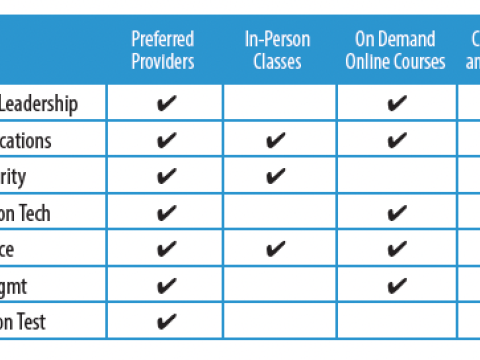Optimizing the Human Weapon System
One of the most frequent platitudes given by senior commanders to their subordinates is that “people are our most valuable asset.” While this very well may be true in the abstract, the U.S. Defense Department at large prefers to focus its efforts on more tangible items—namely, expensive weapons systems. Even in an era of rapid technological change, the human being remains the linchpin that determines victory or defeat. Yet, despite billions of dollars spent every year on cutting-edge research and development projects for equipment, very few programs are focused on optimizing the physical, psychological and intellectual capabilities of our warfighters.
This is ironic because personnel costs are fast becoming the largest portion of the Defense Department’s budget. Much of these costs stem from widely applied and necessary medical, salary and retirement payments. Yet, treating the human as a weapons system requires concerted research into the realm of pushing human performance to its very limits throughout the spectrum of capabilities. Defense planners currently do a very poor job at capturing these results.
Even the U.S. Army, which boasts a program executive office devoted to the human, does so with a view toward external capabilities such as night-vision goggles rather than getting the most out of the human itself, sans anything else.
The mind is the greatest strategic weapon ever created. More powerful than any computer, its mysteries have only just begun to be revealed. Training such an asset, and understanding the best way to impart relevant lessons, should be paramount. Yet, one of the biggest complaints from trainees is the poor state of military education.
The U.S. Marine Corps recently unveiled a plan to get more out of its top officers through professional education programs within particular career milestones. However, instead of assigning these limited slots in accordance with the intellectual abilities and natural curiosities of the participants, leaders have assigned students to courses of study based on the “needs of the service.” In one case, a friend of mine was assigned to a master’s degree in education after studying as a mechanical engineer in college. Another was assigned to learn Turkish instead of flying as a department head with an operational squadron.
Basic psychology teaches that individuals excel—and benefit their communities best—when allowed to pursue unique passions. On the other hand, a system that shoehorns people into particular educational tracks will lead to suboptimal results and likely will cause more intellectual difficulties than gains. While the motives for the service as a whole may be in the right place—meeting institutional quotas for specific academic courses—by not optimizing individual performance through preference management, obtained results certainly will be worse than intended.
This is just one small example of how training fails to get the most out of human performance. Many computer-based training modules are uninspiring, error prone and non-interactive. These waste time and money, especially when hands-on training done in remediation could have been the main thrust of effort from the outset.
Physical training is another area ripe for optimization. Every service has standardized physical fitness tests, regardless of warfare community. Some, such as special operations, have more stringent and comprehensive tests. Yet, in general, a submariner is treated the same as an aviator when evaluated.
This baseline may be a useful starting point, but the stressors incurred by various communities are very different and should be augmented accordingly. For example, chronic neck strain from high-G maneuvers is common among fighter pilots but rare among sailors on a cruise. Modern exercise techniques can strengthen an aviator’s physiology, but most research in this area is being conducted by civilian academic institutions, not by places such as Top Gun.
Such a comparison may cause some scoffing; but if the latter organization is truly dedicated to making the best fighter pilots possible, tactical know-how may not be enough. Techniques to combat fatigue, optimize caloric intake and improve endurance during stressful maneuvers all are vital elements of keeping a lucid, thinking warfighter engaged during a dogfight. The most knowledgeable tactician in the world is useless after succumbing to G lock.
Process improvements of this sort often offer outsized gains, especially when compared with the high and escalating cost of complex weapons systems. Simply hiring a few medical researchers, specifically those that are already doing studies on professional athletes, would open up new avenues of understanding and combat employment.
The human system, combining intellectual, psychological and physical elements, is the most adaptive and lethal weapon system available. Instead of looking to the next great widget, perhaps unlocking the key to human performance optimization will deliver the next knockout blow to future adversaries.
Lt. Ben Kohlmann, USN, is an F/A-18 instructor pilot serving in the Innovation and Concepts Department at the Naval Warfare Development Command, part of the Chief of Naval Operations’ Rapid Innovation Cell. He is the founder of Disruptive Thinkers, an organization devoted to bringing innovative military personnel together with civilian entrepreneurs. The views expressed in this column are his own and not necessarily those of the U.S. Navy or of SIGNAL Magazine. We welcome your comments on this column below or via email at signalnews@afcea.org.




Comments